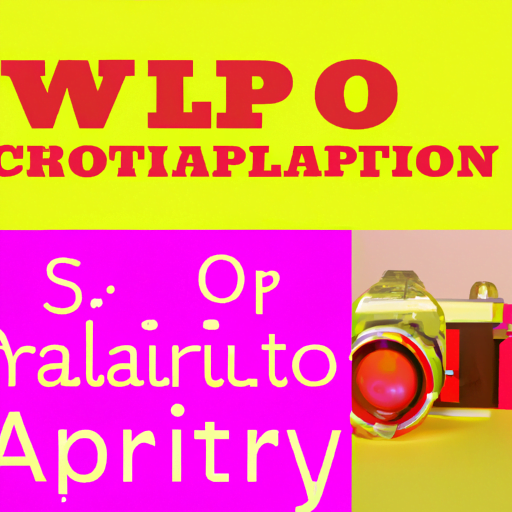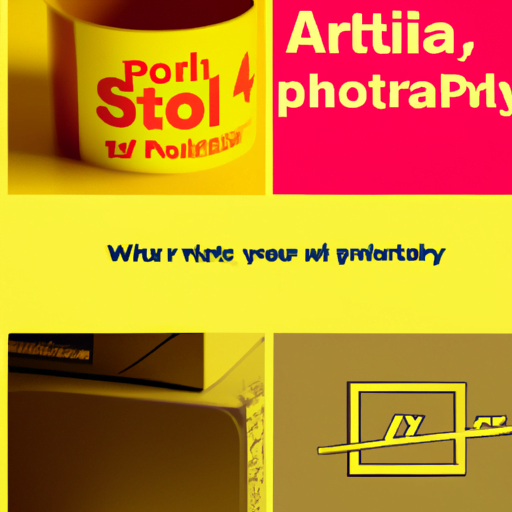
-
Table of Contents
The Relationship between Typography and Color

Typography and color are two essential elements in design that can greatly impact the effectiveness and aesthetics of any visual communication. When used together strategically, typography and color can create a harmonious and impactful design that effectively conveys a message and evokes emotions. In this article, we will explore the relationship between typography and color, and how they can work together to create visually appealing and effective designs.
The Psychology of Color
Color has a profound impact on human psychology and emotions. Different colors evoke different feelings and associations, and understanding the psychology of color is crucial in design. When choosing colors for a design, it is important to consider the message and emotions you want to convey.
For example, warm colors like red, orange, and yellow are often associated with energy, passion, and excitement. These colors can be used to grab attention and create a sense of urgency. On the other hand, cool colors like blue, green, and purple are often associated with calmness, trust, and stability. These colors can be used to create a sense of relaxation and trust.
When it comes to typography, the color of the text can enhance or detract from the overall design. The color of the text should be chosen carefully to ensure readability and legibility. Contrast between the text color and the background color is crucial to ensure that the text is easily readable.
The Role of Typography in Design
Typography is not just about choosing a font; it is about how the text is arranged, styled, and presented. Typography plays a crucial role in conveying the tone, mood, and hierarchy of information in a design.
Fonts have their own personalities and can evoke different emotions. For example, a bold and modern font can convey a sense of strength and confidence, while a handwritten font can create a more personal and intimate feel. The choice of font should align with the message and emotions you want to convey.
Typography also helps establish a hierarchy of information in a design. By using different font sizes, weights, and styles, designers can guide the viewer’s attention and emphasize important information. For example, headings are often larger and bolder to grab attention, while body text is smaller and more readable.
The Interplay between Typography and Color
Typography and color are not independent elements in design; they work together to create a cohesive and impactful design. The color of the text can be used to enhance the overall design and convey emotions.
One way to use typography and color together is through color contrast. By using contrasting colors for the text and background, designers can create visual interest and ensure readability. For example, using a dark text color on a light background or vice versa can create a strong contrast that makes the text stand out.
Another way to use typography and color together is through color associations. By choosing text colors that align with the emotions and associations of the chosen color palette, designers can create a harmonious and visually appealing design. For example, using a warm color for the text in a design that aims to evoke energy and excitement can reinforce the message and create a cohesive design.
Case Studies: Effective Use of Typography and Color
Let’s explore some real-world examples of how typography and color have been effectively used together in design:
1. Coca-Cola
The Coca-Cola logo is a classic example of effective use of typography and color. The bold and flowing script font evokes a sense of nostalgia and tradition, while the vibrant red color conveys energy and excitement. The combination of the font and color creates a strong and recognizable brand identity.
2. Apple
Apple’s branding is known for its minimalist and sleek design. The use of a clean and modern font, such as San Francisco, combined with a simple color palette of white and grayscale, creates a sense of sophistication and elegance. The typography and color choices reflect Apple’s commitment to simplicity and innovation.
3. Airbnb
Airbnb’s rebranding in 2014 introduced a new logo that combined the “A” symbol with the wordmark. The custom-designed font, called “Airbnb Cereal,” was created to reflect the brand’s values of belonging and inclusivity. The font’s rounded edges and friendly appearance, combined with a warm and welcoming color palette, create a sense of trust and comfort.
Conclusion
The relationship between typography and color is a powerful tool in design. By understanding the psychology of color and the role of typography, designers can create visually appealing and effective designs that convey the desired message and evoke the intended emotions.
When using typography and color together, it is important to consider the contrast between the text and background, as well as the associations and emotions that different colors evoke. By carefully choosing fonts, arranging text, and selecting colors that work harmoniously, designers can create impactful designs that leave a lasting impression.
Remember, typography and color are not just aesthetic choices; they are powerful tools that can enhance the effectiveness of any design. So, next time you embark on a design project, consider the relationship between typography and color and harness their combined power to create a visually stunning and emotionally engaging design.
